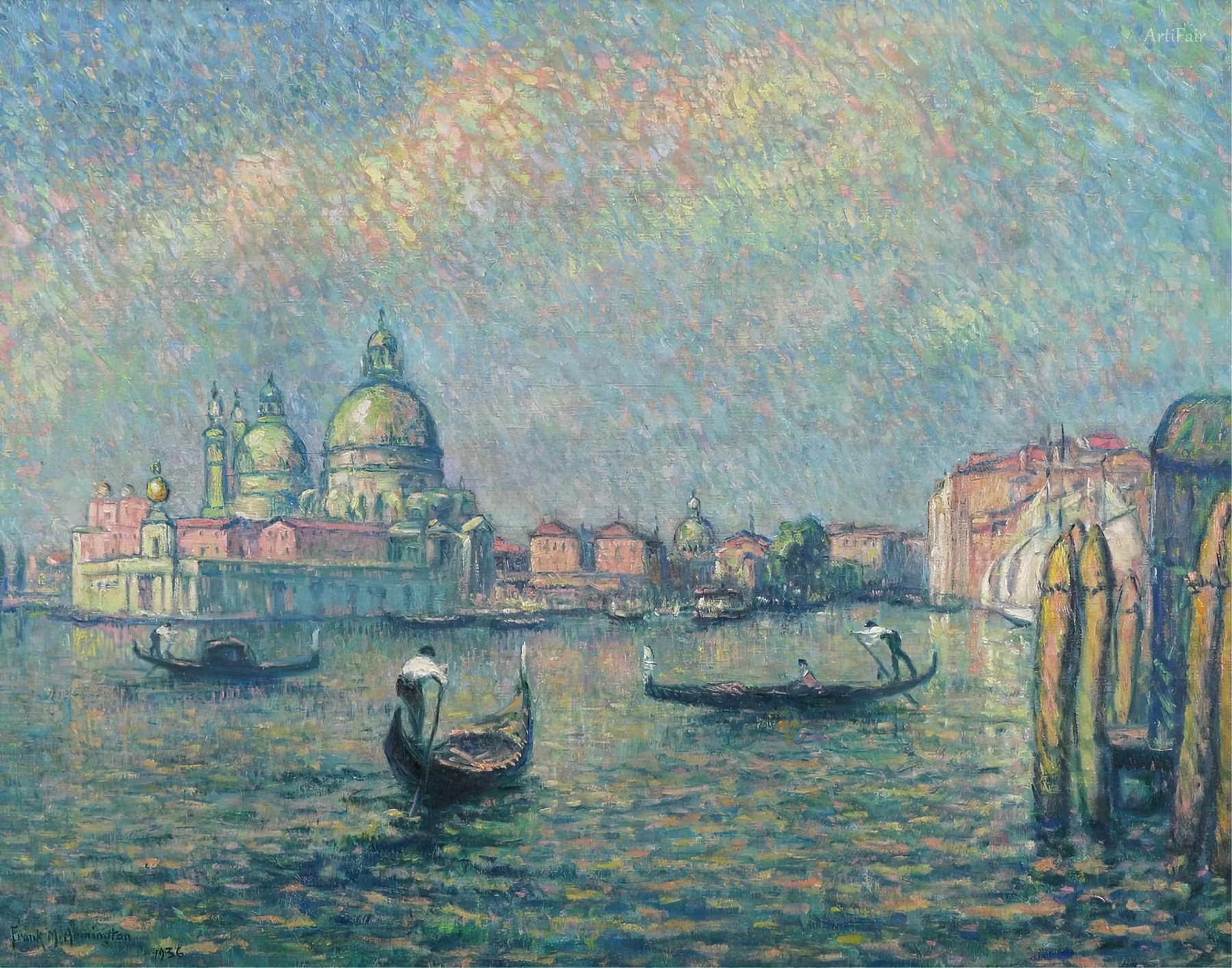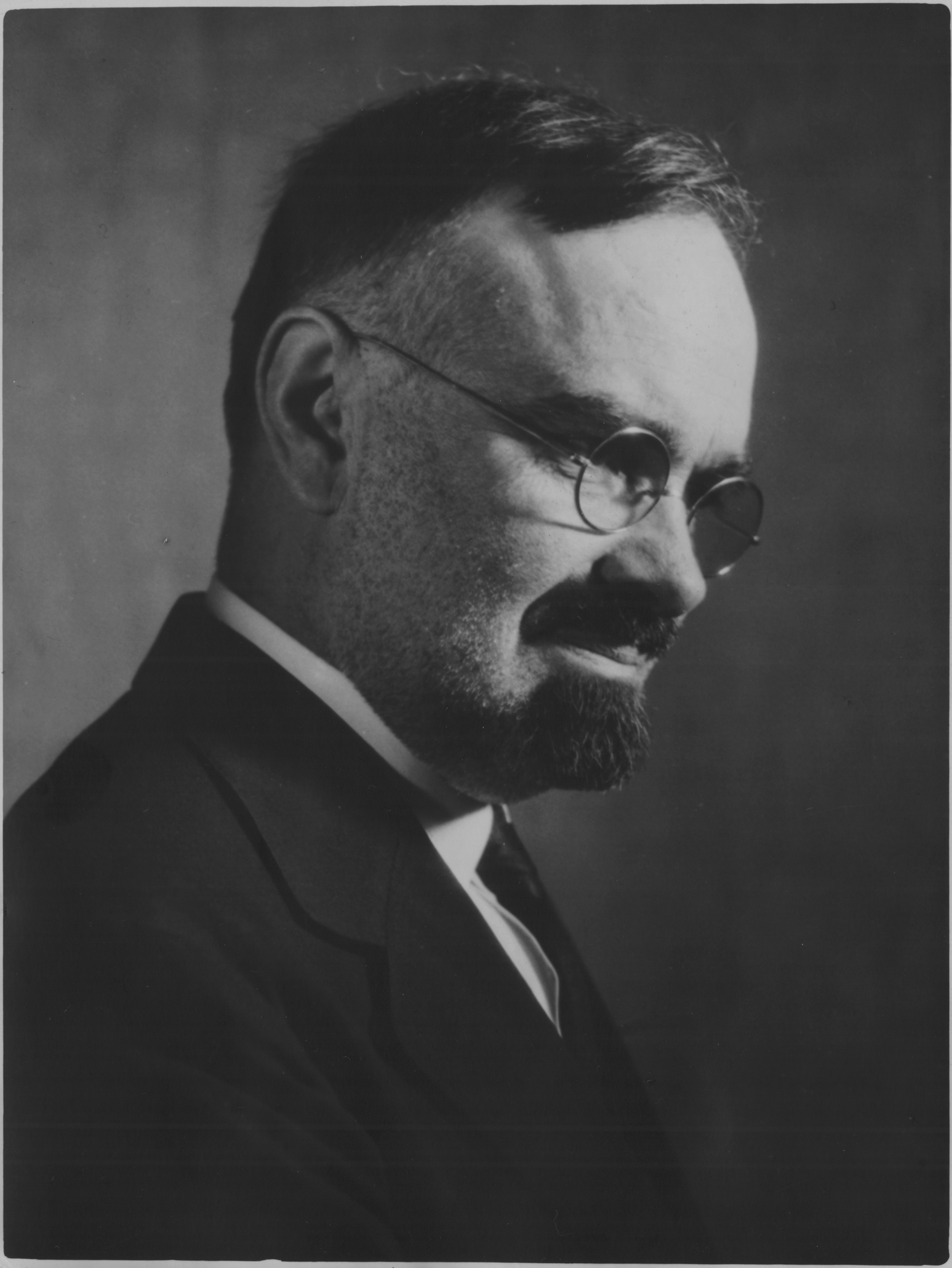

Frank Armington
CA
56
Artworks
1876 - 1941
Lifespan
Artist Biography
Frank Milton Armington (July 28, 1876 – September 21, 1941) was a distinguished Canadian-born artist whose prolific career, primarily centered in Paris, left an indelible mark on the worlds of etching, lithography, and painting. Born in the small town of Fordwich, Ontario, Armington's artistic journey began early. From 1892, for a period of seven years, he honed his foundational skills under the tutelage of the noted portrait artist J.W.L. Forster in Ontario. It was during these formative classes that he met Caroline Wilkinson, a fellow aspiring artist who would become not only his wife but also his lifelong artistic collaborator. This initial period of study in Canada was crucial, instilling in him a dedication to craftsmanship and an ambition that would soon lead him to the heart of the art world.
In 1899, drawn by the magnetic pull of Paris, the undisputed capital of the arts at the time, Armington embarked on his first transformative visit. It was in this vibrant city that he married Caroline Wilkinson, cementing a partnership that would define both their personal and professional lives. He enrolled at the prestigious Académie Julian, a renowned institution that attracted artists from across the globe, to further refine his artistic talents. However, this Parisian sojourn was initially brief. In 1900, the Armingtons returned to Canada, settling in Winnipeg, Manitoba. There, Frank Armington quickly established himself as a significant figure in the burgeoning local art scene. In 1903, he became a founding member and the first Vice President of the Manitoba Society of Artists. During these years in Winnipeg, he also worked with the Winnipeg Tribune and taught art at Havergal College, supplementing his income with various commercial art assignments and exhibiting his work at the Winnipeg Industrial Exhibitions from 1902 to 1905.
The allure of Paris proved irresistible, and in 1905, Frank and Caroline Armington made the definitive move back to the French capital. This marked the beginning of an immensely productive period, with Paris serving as their home and artistic base for nearly thirty-five years, until 1939. Immersing themselves in the city's dynamic art scene, Frank attended the Académie de la Grande Chaumière and once again enrolled at the Académie Julian. A pivotal moment came in 1906 when Frank, inspired by a fellow student, began to explore the medium of etching. Both he and Caroline rapidly became proficient, embracing the etching revival of the early 20th century and establishing themselves as respected figures within the Parisian expatriate art community. Their work gained recognition, with Frank's paintings being accepted into the esteemed Salon d'Automne and other French Salons for several years. During their time in Paris, they also formed a close friendship with the poet and writer Robert W. Service. Their artistic endeavors were frequently fueled by extensive travels throughout France and to numerous other countries, including Belgium, England, Italy, Sweden, and Algeria, capturing the diverse landscapes and cityscapes they encountered.
Armington was a remarkably versatile artist, adept in multiple mediums. His oeuvre includes over 221 etchings, a significant number of lithographs, and accomplished paintings. His subject matter was diverse, ranging from idyllic countrysides and evocative nocturnal cityscapes to intricate architectural details, delicate floral still lifes, expressive portraits, and sensitive nudes. His artistic style was characterized by fluid lines, precise and refined etching techniques, and a masterful use of shading to create atmospheric perspectives, particularly evident in his captivating night scenes and his studies of the human form. The Armingtons' etchings, celebrated for their evocative subject matter and convenient portability, gained considerable commercial success in both Europe and North America. They also undertook notable commissions, including a series of works for the Canadian Pacific Railway, which were illustrated in the book "Sixty Days in Canada," and contributions to the Canadian War Memorials Portfolio.
The quality and appeal of Frank Armington's work led to significant international recognition and acquisition by numerous prestigious institutions. As early as 1910, the National Gallery of Canada began purchasing his etchings, acquiring four that year and additional examples the following year; eventually, over 100 of his works would be housed in its collection. In 1915, he generously donated 28 etchings to the New York Public Library. A further testament to his acclaim came in 1928 when the Library of Congress purchased fourteen of his etchings, including seven nudes. Frank and Caroline frequently exhibited their work together, holding a joint show at the Nova Scotia Museum of Fine Arts in Halifax around 1911 and another at the Art Gallery of Toronto (now the Art Gallery of Ontario) in 1929. Their accomplished prints found their way into numerous esteemed international collections, including The Metropolitan Museum of Art in New York, the Museum of Fine Arts in Boston, the British Museum and the Victoria and Albert Museum in London, and The Louvre in Paris, reflecting their broad appeal and technical skill. They were also actively involved with etching societies in France, England, and the United States.
In 1939, as Europe stood on the brink of war, Frank and Caroline Armington made the decision to leave Paris and move to New York City. This move marked the end of an era for the couple who had spent the majority of their adult lives immersed in the European art world. Tragically, Caroline passed away soon after their arrival in New York, a profound loss for Frank. He remarried in 1940 but his own life was cut short the following year; Frank Armington died in New York City on September 21, 1941. Despite the sorrow of his final years, his legacy, intertwined with that of Caroline, endures. The Armingtons are remembered for their dedicated artistic partnership, their unwavering commitment to excellence, and their timeless depictions of the historic charm of Old Europe and the emerging landscapes of modern North America. Their body of work continues to captivate art enthusiasts and inspire artists, a testament to their remarkable journey from the Canadian countryside to the heart of the international art scene. The book “Caroline and Frank Armington: Canadian Painter-Etchers in Paris” by Janet Braide and Nancy Parke-Taylor further documents their significant contributions.